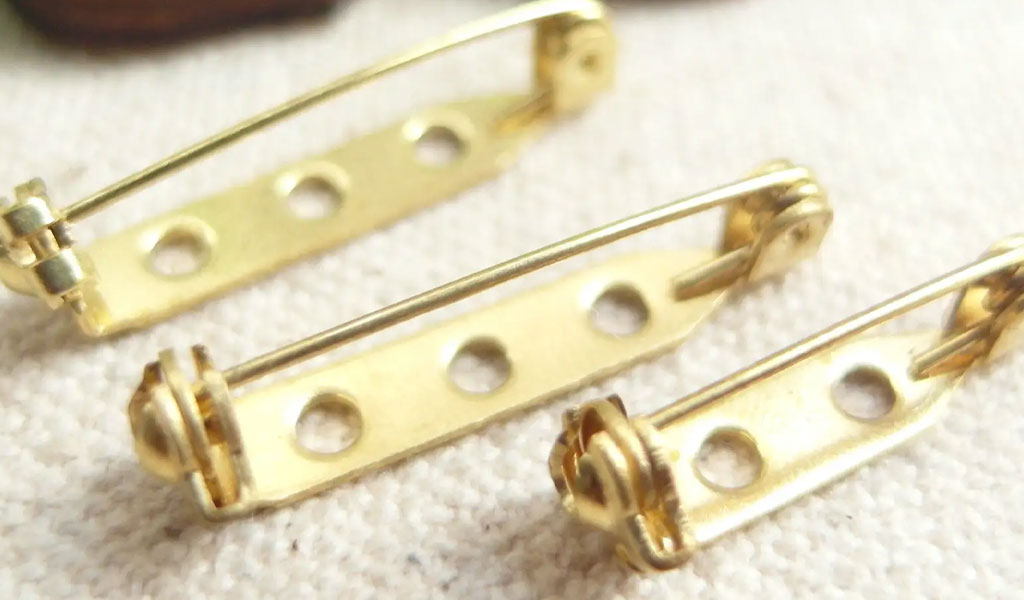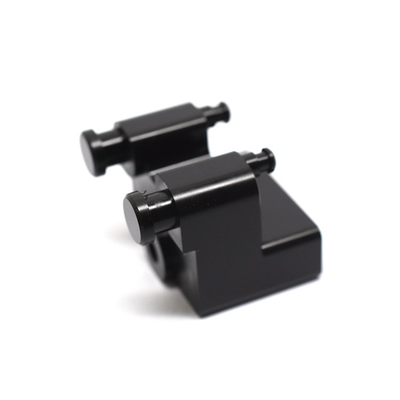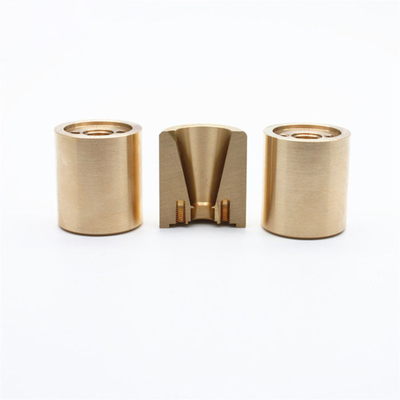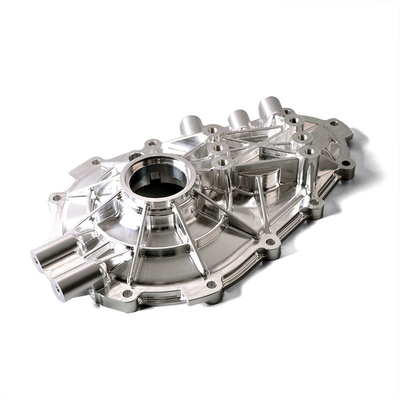What is Brass Made Of

Brass is a versatile metallic alloy primarily composed of copper and zinc. Due to its unique combination of mechanical and aesthetic properties, brass has been used for thousands of years in a variety of applications ranging from decorative items to industrial machinery. The specific ratio of copper to zinc in brass can be varied to alter its properties, which gives rise to many types of brass, each suited to different purposes. Brass has a yellowish color, often resembling gold, which adds to its appeal for use in ornamental and decorative applications.
The history of brass dates back to the Bronze Age, though it became more common during the Roman period when its production techniques were better understood. The ability to modify the ratio of copper to zinc makes brass a more versatile alloy than other copper-based alloys, such as bronze. Today, brass is produced on a large scale and is a crucial material in many industries due to its strength, ductility, and resistance to corrosion.
2. Composition of Brass
The primary elements that make up brass are copper (Cu) and zinc (Zn). These two elements can be combined in different proportions to create various types of brass with unique properties. In general, brass contains between 55% and 90% copper, with zinc making up the remainder. However, small amounts of other elements, such as lead, tin, aluminum, iron, manganese, and arsenic, may be added to modify the material's properties.
-
Copper: Copper is the primary component of brass, typically accounting for 60-80% of the alloy’s composition. Copper gives brass its excellent conductivity, malleability, and corrosion resistance. Copper is a reddish metal with high electrical and thermal conductivity.
-
Zinc: Zinc is the second key element in brass, usually accounting for 20-40% of the alloy. Zinc increases the strength and hardness of brass without significantly compromising its corrosion resistance. Pure zinc has a bluish-white color and is relatively brittle, but when alloyed with copper, it imparts beneficial properties to brass.
-
Alloying Elements: Brass can also contain small quantities of other metals or elements to improve certain properties. Common additions include:
- Lead (Pb): Added in small amounts (usually less than 3%) to improve machinability, particularly in free-cutting brass.
- Tin (Sn): Enhances corrosion resistance, especially in marine environments.
- Aluminum (Al): Increases strength and resistance to corrosion.
- Iron (Fe): Improves strength and wear resistance.
- Manganese (Mn): Improves strength and hardness, especially in high-strength brasses.
3. Types of Brass
There are several classifications of brass, each distinguished by its specific composition and the phases present in the microstructure.
-
Alpha Brasses: Contain less than 37% zinc and are composed primarily of a single phase (alpha phase), which is a solid solution of zinc in copper. These brasses are known for their excellent cold working properties and are ductile, making them suitable for processes such as rolling, drawing, and stamping. Common examples include cartridge brass (70% Cu, 30% Zn).
-
Beta Brasses: These contain between 37% and 45% zinc. The beta phase has a body-centered cubic structure, making the material harder and more suitable for hot working processes. Beta brasses are often used in applications requiring higher strength than alpha brasses can provide, such as in plumbing fixtures.
-
Alpha-Beta Brasses: Contain between 37% and 45% zinc and are composed of both the alpha and beta phases. These brasses combine the cold workability of alpha brasses with the strength of beta brasses. They are commonly used in forgings and other components requiring both strength and formability.
-
Gamma Brasses: Contain more than 45% zinc, and their microstructure consists of a gamma phase. These brasses are generally brittle and are not widely used due to their poor mechanical properties.
4. Manufacturing of Brass
Brass is typically manufactured by melting copper and zinc together, either in a blast furnace or an electric arc furnace. The precise method of production depends on the type of brass and the desired properties. The two key processes used in brass production are casting and forging.
-
Casting: Involves pouring molten brass into molds to form various shapes. This process is widely used for components such as valves, plumbing fittings, and decorative hardware.
-
Forging: Involves heating brass billets and shaping them by pressing or hammering. Forged brass components are known for their strength and are used in applications requiring high durability, such as gears and bearings.
Modern brass production also includes extrusion and rolling to produce rods, sheets, and wires. These semi-finished products can be further processed to make a wide variety of finished goods.
5. Properties of Brass
-
Physical Properties: Brass has a density of around 8.4-8.7 g/cm³, depending on the composition. It has a melting point range of approximately 900°C to 940°C. Its appearance can vary from yellow to reddish, depending on the copper content. Brass is a relatively good conductor of heat and electricity.
-
Chemical Properties: Brass exhibits excellent resistance to corrosion, especially in neutral and mildly acidic environments. The presence of zinc helps form a protective oxide layer on the surface, which prevents further oxidation. Some brasses, especially those with tin or aluminum, are highly resistant to seawater corrosion.
-
Mechanical Properties: Brass is known for its good tensile strength, ductility, and toughness. Its mechanical properties can be enhanced through cold working and heat treatment. Brasses containing higher amounts of zinc tend to be stronger but less ductile than those with lower zinc content.
6. Corrosion Resistance
Brass is highly resistant to corrosion due to the formation of a passive oxide layer that prevents further oxidation. This property makes it an excellent material for use in plumbing and electrical applications. The addition of elements such as tin and aluminum further enhances brass’s resistance to specific forms of corrosion, such as dezincification (a process where zinc is selectively leached out of brass).
Factors that affect brass corrosion include the environment, the alloy’s composition, and the presence of impurities in the material. For example, brasses exposed to seawater or chloride-rich environments can experience pitting or stress corrosion cracking if not properly alloyed with resistant elements like tin.
7. Applications of Brass
Brass’s wide range of applications arises from its unique combination of mechanical and chemical properties.
-
Industrial Uses: Brass is used in a variety of industrial applications due to its machinability, corrosion resistance, and durability. It is commonly found in the manufacture of gears, bearings, and valves.
-
Ornamental Uses: Brass has long been used in decorative arts, architecture, and jewelry. Its resemblance to gold and its ability to be easily shaped make it a popular choice for ornamental items, such as lamps, handles, and fixtures.
-
Musical Instruments: Brass is widely used in musical instruments, particularly in wind instruments such as trumpets, trombones, and tubas. Its acoustic properties make it ideal for producing clear, resonant tones.
-
Plumbing and Electrical Applications: Due to its corrosion resistance, brass is often used in plumbing fixtures, including faucets, valves, and pipes. Brass’s electrical conductivity also makes it suitable for use in electrical connectors and terminals.
8. Environmental and Recycling Aspects
Brass is an environmentally friendly material because it is fully recyclable. Scrap brass can be remelted and reused without any loss of quality, making it a sustainable choice for industries. The recycling process for brass is energy-efficient compared to the production of virgin brass from raw materials, reducing the environmental footprint of the material.
9. Conclusion
Brass is a vital alloy with a wide range of uses due to its unique combination of copper and zinc. The ability to alter its composition makes brass a highly versatile material that can be tailored for specific applications, from industrial machinery to decorative items. Its resistance to corrosion and ease of recycling further enhance its appeal as a sustainable, durable material.
Reprint Statement: If there are no special instructions, all articles on this site are original. Please indicate the source for reprinting:https://www.cncmachiningptj.com/,thanks!
 PTJ® provides a full range of Custom Precision cnc machining china services.ISO 9001:2015 &AS-9100 certified. 3, 4 and 5-axis rapid precision CNC machining services including milling, turning to customer specifications,Capable of metal & plastic machined parts with +/-0.005 mm tolerance.Secondary services include CNC and conventional grinding, drilling,die casting,sheet metal and stamping.Providing prototypes, full production runs, technical support and full inspection.Serves the automotive, aerospace, mold&fixture,led lighting,medical,bicycle, and consumer electronics industries. On-time delivery.Tell us a little about your project's budget and expected delivery time. We will strategize with you to provide the most cost-effective services to help you reach your target,Welcome to Contact us ( [email protected] ) directly for your new project.
PTJ® provides a full range of Custom Precision cnc machining china services.ISO 9001:2015 &AS-9100 certified. 3, 4 and 5-axis rapid precision CNC machining services including milling, turning to customer specifications,Capable of metal & plastic machined parts with +/-0.005 mm tolerance.Secondary services include CNC and conventional grinding, drilling,die casting,sheet metal and stamping.Providing prototypes, full production runs, technical support and full inspection.Serves the automotive, aerospace, mold&fixture,led lighting,medical,bicycle, and consumer electronics industries. On-time delivery.Tell us a little about your project's budget and expected delivery time. We will strategize with you to provide the most cost-effective services to help you reach your target,Welcome to Contact us ( [email protected] ) directly for your new project.

- 5 Axis Machining
- Cnc Milling
- Cnc Turning
- Machining Industries
- Machining Process
- Surface Treatment
- Metal Machining
- Plastic Machining
- Powder Metallurgy Mold
- Die Casting
- Parts Gallery
- Auto Metal Parts
- Machinery Parts
- LED Heatsink
- Building Parts
- Mobile Parts
- Medical Parts
- Electronic Parts
- Tailored Machining
- Bicycle Parts
- Aluminum Machining
- Titanium Machining
- Stainless Steel Machining
- Copper Machining
- Brass Machining
- Super Alloy Machining
- Peek Machining
- UHMW Machining
- Unilate Machining
- PA6 Machining
- PPS Machining
- Teflon Machining
- Inconel Machining
- Tool Steel Machining
- More Material





